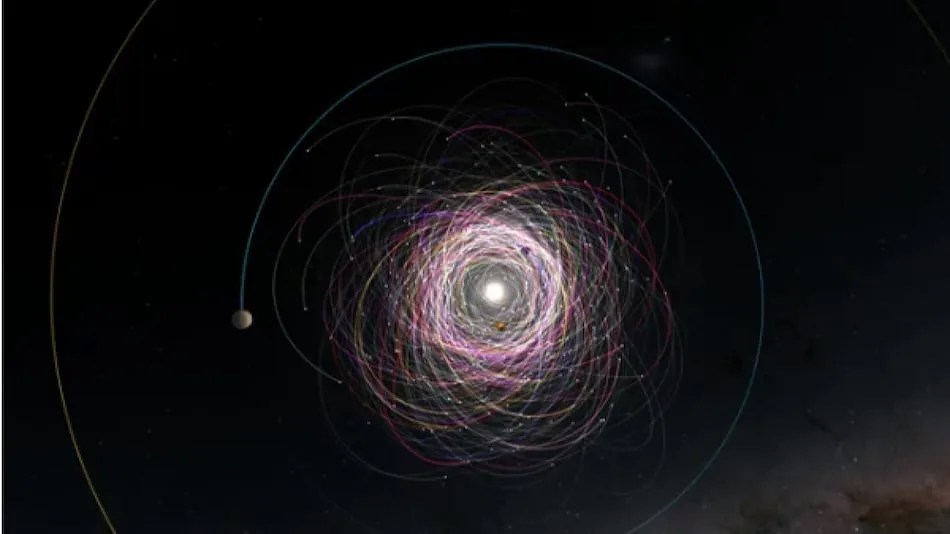Gaia Telescope Reportedly Discovers Hidden Moons Orbiting 350 Asteroids
The European Space Agency’s Gaia space telescope has made a groundbreaking discovery, detecting potential moons around over 350 asteroids.

Photo Credit: ESA/Gaia/DPAC
Highlights
- Gaia space telescope identifies potential moons orbiting asteroids
- Discovery could nearly double the known number of binary asteroid systems
- The findings could provide insights into early solar system conditions
The European Space Agency's Gaia space telescope has uncovered a significant breakthrough in asteroid research. It has detected potential moons orbiting more than 350 asteroids previously thought to be solitary. This finding, detailed in Gaia's Data Release 3 (DR3), suggests that the number of binary asteroid systems in our solar system could nearly double.
Gaia has now demonstrated its ability to conduct "blind searches" for new asteroid-moon pairs. The telescope's observations indicate that many asteroids have hidden moons that were not previously detected. This discovery underscores Gaia's role in expanding our understanding of these small celestial bodies.
According to Luana Liberato, the lead researcher from the Observatoire de la Côte d'Azur, binary asteroids are challenging to identify due to their small size and great distance from Earth. Despite expectations that around one-sixth of asteroids might have companions, only 500 of the billion known asteroids were previously identified as binary systems. The new data from Gaia's DR3 release shows that there are many more such systems awaiting discovery.
Asteroids, the remnants from the early solar system, offer valuable insights into its formation and evolution. By studying these objects, scientists hope to understand better the conditions of the early solar system and the potential role of asteroids in delivering vital organic materials to Earth. The discovery of binary asteroids adds another layer to this research by revealing how collisions and interactions between these bodies might have shaped our planetary system.
Gaia's precise measurements have revealed subtle "wobbles" in asteroid orbits, indicating the presence of smaller moon-like companions. This advancement not only enhances our knowledge of asteroids but also sets the stage for future discoveries. The upcoming Data Release 4 in 2026 is expected to provide even more insights into asteroid-moon systems, further advancing our understanding of these ancient space objects.


